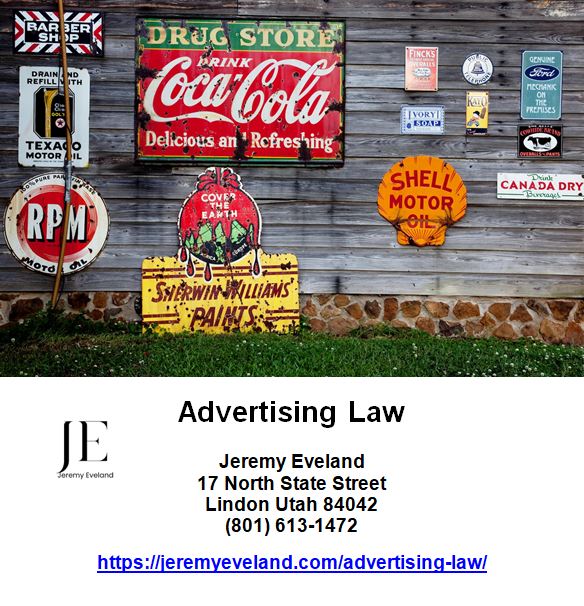In today’s digital landscape, native advertising has become an increasingly popular marketing strategy for businesses to promote their products or services in a seamless, non-intrusive manner. This article will provide you with a comprehensive understanding of native advertising rules, equipping you with the knowledge needed to navigate this advertising landscape effectively. Whether you are a business owner, a marketing professional, or simply curious about the subject, you will find this article to be a valuable resource in demystifying native advertising and exploring its potential benefits. By the end of this article, you will not only be well-informed about native advertising, but also inspired to take advantage of this powerful tool to drive business growth.

What is Native Advertising?
Native advertising is a form of online advertising that seamlessly blends in with the content of the platform on which it appears. Unlike traditional banner or display ads, native advertising matches the format and style of the platform, allowing it to appear more organic and less intrusive to the audience. The aim of native advertising is to deliver promotional messages in a way that feels natural and valuable to the user.
Definition of Native Advertising
Native advertising is a paid form of media placement that is designed to resemble the surrounding editorial content in order to provide a less disruptive advertising experience. It is typically presented in the form of articles, videos, sponsored content, or interactive elements that mimic the style and format of the platform on which it is displayed.
Characteristics of Native Advertising
There are several key characteristics that distinguish native advertising from other forms of advertising:
-
Seamless Integration: Native ads seamlessly blend in with the surrounding content, making them indistinguishable from non-promotional material.
-
Non-Interruptive: Native ads avoid interrupting the user experience by providing valuable and relevant content that aligns with the interests of the audience.
-
Targeted and Customizable: Native advertising allows for highly targeted and customized campaigns, enabling businesses to reach specific audience segments with personalized messages.
-
Purposeful Storytelling: Native ads often adopt a storytelling approach, leveraging narratives and engaging content to connect with the audience on a deeper level.
Importance of Native Advertising
Building Trust with the Audience
Native advertising plays a crucial role in building trust with the audience. By seamlessly blending in with the surrounding content, native ads are perceived as more trustworthy and credible compared to traditional ads. When done well, native advertising can help businesses establish themselves as thought leaders and industry experts, enhancing their brand reputation and generating positive sentiment among their target audience.
Integration with the Content
One of the key advantages of native advertising is its ability to integrate with the content seamlessly. By adopting the same format and style as the surrounding editorial or user-generated content, native ads are more likely to be consumed and engaged with by the audience. This integration also helps to minimize ad-blocking and ad-skipping behavior, as the content appears more relevant and valuable to the user.
Increased Engagement and Conversion
Native advertising has been proven to drive higher engagement and conversion rates compared to other forms of advertising. The non-disruptive nature of native ads allows them to capture the attention of the audience without being intrusive. By providing valuable and relevant content, native ads are more likely to elicit a positive response from the audience, leading to increased brand awareness, website traffic, and ultimately, conversions.
Targeted Reach and Customization
One of the key advantages of native advertising is its ability to target specific audience segments and customize the message accordingly. By leveraging user data and preferences, businesses can deliver personalized native ads to their target audience, increasing the chances of capturing their attention and driving desired actions. This targeted approach ensures that businesses maximize their advertising budget by reaching the right people with the right message at the right time.
Regulatory Guidelines for Native Advertising
FTC Guidelines for Native Advertising
The Federal Trade Commission (FTC) has established guidelines to ensure transparency and prevent deceptive practices in native advertising. The FTC requires that native ads be clearly identified as advertising, allowing consumers to differentiate between promotional content and editorial or user-generated content. These guidelines aim to protect consumers from being misled or confused by the commercial nature of native advertising.
Disclosure Requirements
To comply with FTC guidelines, businesses engaging in native advertising must provide clear and conspicuous disclosure of the commercial nature of the content. This disclosure should be placed in close proximity to the native ad and use language that is easily understandable to the average consumer. It should be visible and prominent enough to ensure that consumers can easily identify the content as advertising.
Clear Identification as Ads
In addition to clear disclosure, native ads should be clearly identified as ads using visual cues such as labels or design elements that distinguish them from non-promotional content. This ensures that consumers can easily recognize and differentiate native ads from editorial or user-generated content.
Avoiding Deception and Confusion
Native advertisers must take care to avoid deceptive practices that may mislead or confuse consumers. This includes avoiding misleading headlines, using accurate and non-exaggerated claims, and ensuring that the overall presentation of the native ad is not likely to misrepresent the product or service being advertised.
Ensuring Compliance with FTC Regulations
Transparent Disclosure Statements
To ensure compliance with FTC guidelines, it is essential to include transparent disclosure statements in native advertising. This means clearly and conspicuously disclosing the commercial nature of the content, using appropriate language that is easily understandable to the average consumer. The disclosure statement should be placed in a location that is easily noticeable and visible to the user.
Proper Placement and Design
The placement and design of native ads also play a crucial role in compliance. Native ads should be clearly distinguishable from non-promotional content through visual cues such as labels or design elements. The design should ensure that the native ad does not appear to be an integral part of the editorial or user-generated content, avoiding any confusion or deception.
Avoiding Misleading or Ambiguous Language
It is important to avoid using misleading or ambiguous language in native advertising. The language used should accurately represent the product or service being advertised and should not create false expectations or mislead consumers. Claims made in the native ad should be substantiated to ensure that they are not misleading or deceptive.
Best Practices for Effective Native Advertising
Matching the Format and Style of the Platform
To ensure the effectiveness of native advertising, it is crucial to match the format and style of the platform on which the ad is displayed. This means adopting the same layout, fonts, colors, and overall visual style to seamlessly blend in with the surrounding content. By doing so, native ads are more likely to be consumed and engaged with by the audience.
Creating Relevant and Engaging Content
Native ads should provide valuable and relevant content that aligns with the interests of the target audience. By understanding the needs and preferences of the audience, businesses can create native ads that offer helpful information, entertainment, or solutions to their target audience’s problems. This relevance and value help to capture the audience’s attention and generate positive engagement.
Providing Value to the Audience
Native advertising should prioritize providing value to the audience over purely promotional messaging. By focusing on educating, informing, or entertaining the audience, businesses can build trust and credibility, positioning themselves as reliable sources of information. This value-driven approach also helps to establish long-term relationships with the audience, leading to increased brand loyalty and advocacy.
Monitoring and Evaluating Performance
It is essential to regularly monitor and evaluate the performance of native advertising campaigns. By analyzing key metrics such as engagement rates, click-through rates, and conversions, businesses can identify areas of improvement and optimize their native advertising strategy. This data-driven approach ensures that businesses maximize the effectiveness of their native ads and make informed decisions to achieve their advertising goals.
Examples of Successful Native Advertising Campaigns
Brand Integration with Editorial Content
One successful example of native advertising is when a brand seamlessly integrates its messaging within relevant editorial content. For instance, a fitness brand might collaborate with a health and wellness publication to create an informative article about the benefits of certain exercises, while subtly incorporating their products or services. This approach allows the brand to align itself with trusted editorial content, reaching a highly targeted audience who are interested in fitness.
Interactive and Dynamic Ad Experiences
Another successful approach to native advertising is utilizing interactive and dynamic ad experiences. For example, an automotive brand could create an interactive quiz that helps users discover their ideal car based on their preferences and lifestyle. By offering an engaging and personalized experience, the brand can capture the attention of the audience and establish a positive brand association.
Native Video Advertising
Native video advertising is also a popular and effective strategy. Platforms like YouTube and social media channels offer opportunities for brands to seamlessly integrate video ads within the user experience. By creating high-quality and engaging video content that aligns with the platform, brands can capture the audience’s attention in a non-intrusive manner, increasing the likelihood of engagement and conversion.
Influencer Collaboration for Native Ads
Collaborating with influencers can be a powerful strategy for native advertising. By partnering with influencers who have a strong following and influence in a specific niche, brands can leverage their credibility and expertise to deliver native ads that resonate with the influencer’s audience. Authenticity is key in influencer collaborations, and when done well, it can result in increased brand awareness and trust among the target audience.

Legal Considerations for Native Advertising
Intellectual Property Rights
When engaging in native advertising, it is important to respect intellectual property rights. This includes obtaining appropriate licenses or permissions for using copyrighted material, such as images, videos, or music, in native ads. Failure to do so can result in legal consequences such as copyright infringement claims.
Trademark and Copyright Infringement
Native advertisers must also be cautious of potential trademark and copyright infringement. It is crucial to ensure that the native ads do not contain unauthorized use of protected trademarks, logos, or copyrighted material belonging to others. Proper due diligence and obtaining necessary permissions or licenses are essential to avoid legal disputes.
Avoiding Defamation and Misrepresentation
Native advertising should not engage in defamation or misrepresentation of competitors or their products/services. Making false claims or spreading false information about competitors can lead to legal consequences, damaging the brand’s reputation and exposing them to potential legal action. It is important to ensure that all claims made in native ads are accurate, substantiated, and do not misrepresent the products or services being advertised.
Native Advertising vs. Editorial Content
Differentiating Between Ads and Editorial
It is crucial to clearly differentiate native advertising from editorial content to maintain transparency and avoid misleading the audience. While native ads mimic the format and style of the platform, they should be clearly labeled or visually distinguished to indicate their commercial nature. This allows consumers to make informed decisions and understand which content is sponsored and which is independent editorial.
Maintaining Editorial Integrity
When incorporating native advertising alongside editorial content, it is important to maintain the integrity and independence of the editorial process. The editorial team should have control over the content they produce, ensuring that sponsored content does not compromise their objectivity or journalistic standards. Transparent disclosure and clear separation of advertising and editorial departments are essential to maintain the trust of the audience.
Disclosure of Paid Partnerships
In cases where native advertising involves partnerships with influencers or content creators, it is crucial to disclose the paid nature of the partnership. The audience should be made aware that the content is sponsored and that there is a financial relationship between the influencer/content creator and the brand. This disclosure helps to maintain transparency and allows consumers to evaluate the credibility and trustworthiness of the content.

Challenges and Risks of Native Advertising
Risk of Misleading or Confusing Customers
One of the major challenges of native advertising is the risk of misleading or confusing customers. If native ads are not clearly labeled or if the disclosure is not prominent enough, consumers may mistake them for genuine editorial content. This can lead to a loss of trust, negative sentiment towards the brand, and potential legal consequences for non-compliance with regulatory guidelines.
Maintaining Brand Reputation
Native advertising requires careful attention to brand reputation. Collaborating with reputable publishers and influencers, and ensuring the accuracy and authenticity of the content is paramount. Failure to do so can damage the brand’s reputation, resulting in a loss of customer trust and negative perception. Transparency, integrity, and a focus on providing value to the audience are key to maintaining a positive brand reputation.
Legal Consequences of Non-Compliance
Non-compliance with regulatory guidelines for native advertising can result in legal consequences for businesses. Regulatory bodies, such as the FTC, can impose penalties and fines for deceptive or non-transparent advertising practices. Additionally, brands may face legal action from competitors or consumers if their native ads are found to be misleading, defamatory, or in violation of intellectual property rights. It is crucial for businesses to ensure compliance with applicable laws and guidelines to avoid legal issues.
Future Trends in Native Advertising
Emergence of Programmatic Native Advertising
Programmatic native advertising is gaining popularity as a way to automate and optimize the creation, placement, and targeting of native ads. By leveraging advanced algorithms and real-time bidding, programmatic native advertising allows businesses to effectively reach their target audience at scale while ensuring relevant and personalized content delivery.
Integration of AI and Machine Learning
The integration of artificial intelligence (AI) and machine learning is expected to further enhance the effectiveness of native advertising. AI-powered algorithms can analyze vast amounts of data and consumer behavior to provide valuable insights and optimize native ad campaigns. This technology can also help businesses personalize native ads based on individual preferences, delivering highly targeted and engaging content.
Mobile Native Advertising
With the increasing use of mobile devices, mobile native advertising is becoming more important. Native ads designed specifically for mobile platforms provide a seamless user experience and maximize engagement. Mobile-specific features such as location-based targeting and interactive ad formats enable businesses to connect with their audience in a more personalized and effective manner.
Social Media Native Advertisements
Social media platforms are ideal for native advertising due to their highly engaged user base and specific targeting capabilities. Native ads on social media platforms seamlessly blend with the user’s feed, making them more likely to be noticed and engaged with. With the continuous growth of social media, native advertising on these platforms will continue to play a significant role in reaching and engaging target audiences.
In conclusion, native advertising is a powerful strategy for businesses to reach and engage their target audience in a non-disruptive and valued-driven manner. By seamlessly integrating with the platform’s content and providing relevant and engaging information, native ads can generate trust, increase engagement, and drive conversions. However, it is essential for businesses to comply with regulatory guidelines, maintain transparency, and prioritize the integrity of their brand to avoid legal issues and maintain their reputation. With the emergence of programmatic advertising, AI, and the continuous growth of mobile and social media, native advertising is poised for further advancement and effectiveness in the future.
FAQs:
-
What are the key characteristics of native advertising?
- Native advertising seamlessly blends with the surrounding content.
- It provides a non-interruptive user experience.
- Native ads can be highly targeted and customizable.
- They often adopt a storytelling approach.
-
How does native advertising build trust with the audience? Native advertising builds trust by seamlessly blending in with the content, appearing more trustworthy and credible compared to traditional ads.
-
What are the disclosure requirements for native advertising? Native advertising must have clear and conspicuous disclosure of its commercial nature, placed in close proximity to the native ad, and use easily understandable language.
-
How can businesses ensure compliance with FTC regulations for native advertising? Businesses can ensure compliance by providing transparent disclosure statements, proper placement and design, and avoiding misleading or ambiguous language in their native ads.
-
What are the legal risks of non-compliance with native advertising regulations? Non-compliance with native advertising regulations can result in legal consequences such as penalties, fines, and legal action from competitors or consumers.
-
What are some future trends in native advertising? Future trends include the emergence of programmatic native advertising, the integration of AI and machine learning, mobile native advertising, and social media native advertisements.













